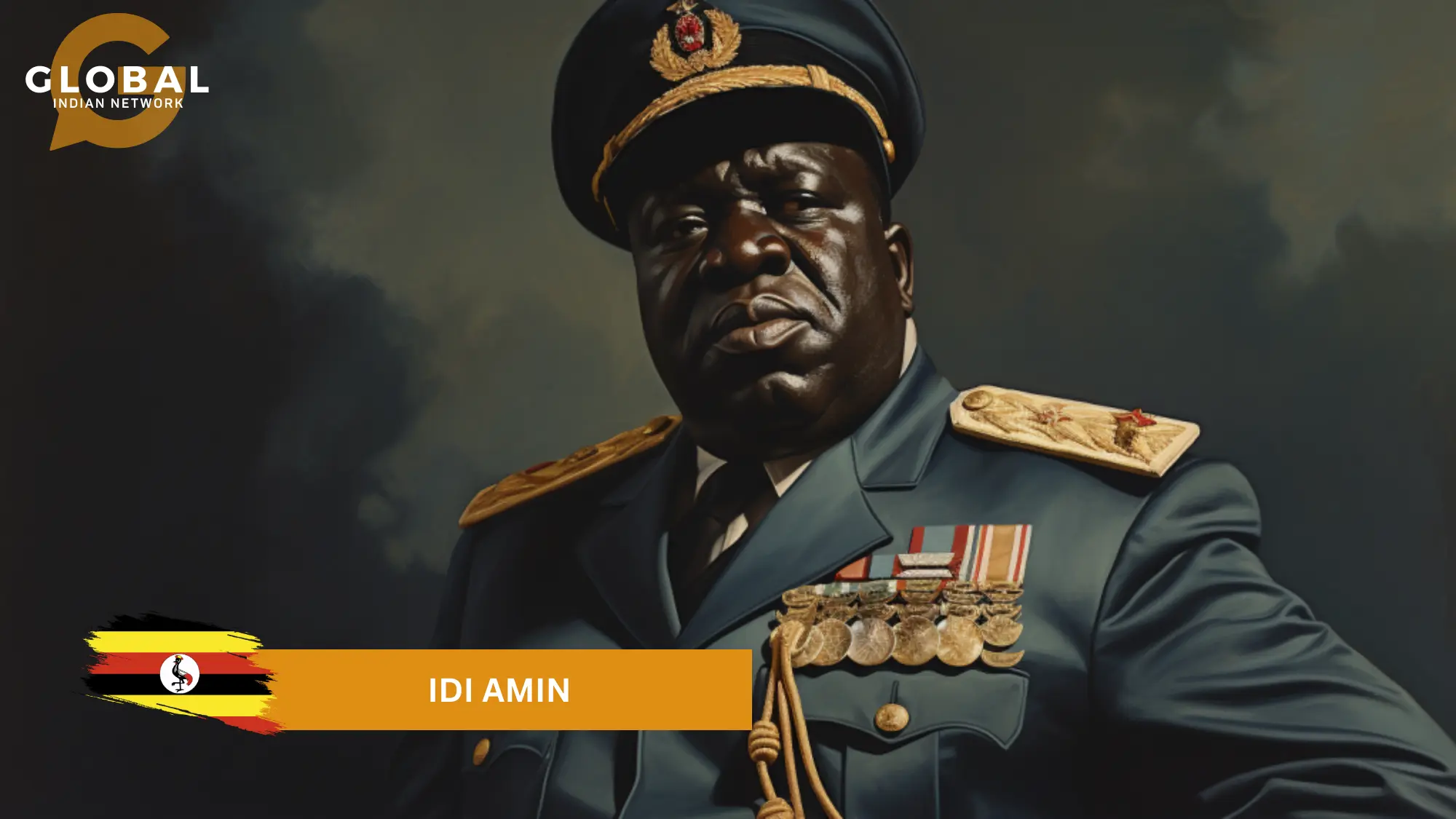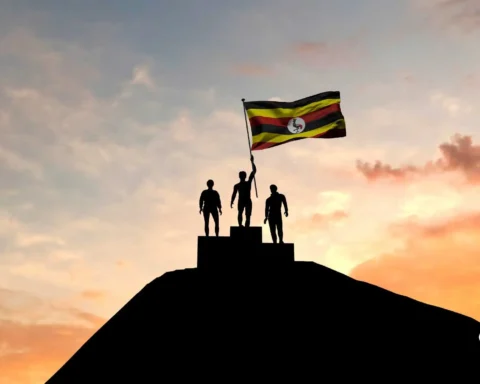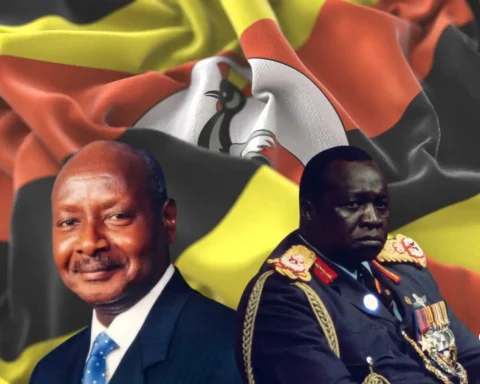All through history, there have been innumerable stories of exploitation and brutality. Books have been written, and movies have been made. Gruesome stories tend to be followed with high levels of interest. Over time, some are forgotten as well. Yet, some perpetrators can never be unseen. Such is the story of Idi Amin, the barbarous dictator, also known as the butcher of Uganda, a landlocked country in East Africa.
Table of Contents
Early Life and Military Career
Born into poverty in 1925 in Koboko, an isolated farming region of northwestern Uganda, Idi Amin was a member of the Kakwa tribe. According to some reports, he was born in 1928 in Kampala's (British Protectorate) police barracks, but most historical accounts refer to Koboko as his birthplace.
The Humble Beginnings of Idi Amin Dada
Amin received very little formal education. One can say he was semi-literate. His upbringing was filled with suffering due to poverty. Amin began his military career at 18 in 1946 when he enlisted in the regiment of the British colonial army, King's African Rifles, and fought against the Japanese in Burma.
Rise Through the Ranks in the Ugandan Armed Forces
Following the conflict, Amin joined the British 4th Ugandan Battalion. As a military personnel, he distinguished himself fighting against the Mau Mau rebels in Kenya from 1953 to 1957. Amin, a competent military commander in Uganda, was promoted to sergeant major and enrolled in an officer training program. As part of the fighters, his swift advancement was largely due to his physical prowess and charisma. After that, as they say, there was no looking back.
Assumption of Power
Ascent to Prime Minister
Before his rise to power, political turmoil, military conflicts, and instability in the country led to a volatile environment that paved the way for a brutal 1971 coup against President Milton Obote. The totalitarian initially served as the Prime Minister from 1971 to 1979. During his rule as Prime Minister, he declared himself President and general, holding the position until he was overthrown in 1979.
The Overthrow of President Obote
In 1962, Uganda's President Milton Obote, leader of the Uganda People's Congress, was elected Prime Minister, but his rule was marred by corruption and authoritarianism, causing discontent among the population and the military. In 1971, Obote learned of the later-to-become-oppressor's planned military coup, which he swiftly overthrew, leveraging his strategic position and widespread army support and becoming the de facto ruler of Uganda, a turning point in the country's history.
The Reign of Terror
Idi Amin's Brutal Regime and Human Rights Abuses
The dictatorial regime in the 'Pearl of Africa', Uganda, from 1971-1979 was marked by severe human rights abuses, political repression, and economic mismanagement. He targeted ethnic groups like Acholi and Langi, resulting in thousands of deaths. The tyrant's expulsion of Uganda's Asian community in 1972 led to economic collapse and property expropriation. He terrorized the public through internal security forces like the State Research Bureau and Public Safety Unity, aiming to eliminate those opposed to his regime.
Idi Amin's dictatorship in Uganda led to the deaths of 100,000-500,000 people, including prominent figures like Chief Justice Benedicto Kiwanuka and Anglican archbishop Janani Luwuum, through arbitrary arrests, torture, and extrajudicial killings, fostering fear and oppression.
Expulsion of Ugandan Exiles and Ethnic Tensions
In 1972, President Idi Amin ordered the expulsion of all Asian Ugandans, primarily Indian, from the country due to anti-Indian sentiment and a belief in black supremacy within Uganda. Amin accused Asians of disloyalty, economic misconduct, and corruption while claiming to return Uganda to ethnic Ugandans. The British colonial legacy favoured Asians' education and economic success, leading to resentment among indigenous Ugandans.
Around 80,000 Ugandans of Indian descent were expelled from Uganda, with only 23,000 obtaining citizenship. This caused panic, heartache, and fear among those who considered Uganda their home. Many became refugees, with the UK accepting a significant number. The autocrat's regime in Uganda resulted in a severe loss of life, including the expulsion of Ugandan Asians, highlighting ethnic tensions and the impact of political decisions on vulnerable communities.
LISTEN TO THIS PODCAST: The Economics of Pan-Africanism and Ugandanness with President Museveni
International Relations
Complex Relationship with the United States
The autocrat's diplomatic relationship with the US was tumultuous, initially supporting his regime as a strategic ally during the Cold War. However, Amin's erratic behaviour, including the expulsion of American citizens, strained the relationship. Despite Carter's commitment to human rights, Congress deemed the atrocities and repression under the dictatorship a need for a new foreign policy approach.
The 1978 embargo on US trade with Uganda set new standards for human rights. The unpopular regime in Uganda, involving over 100,000 deaths and expulsions, drew international attention and strained US-Uganda relations due to his actions, including the expulsion of Ugandan Asians and the murder of Americans.
Uganda's Isolation in the United Nations
From 1971 to 1979, Uganda experienced significant global isolation under the brutal regime of the Dada. The regime was marked by severe human rights abuses, political repression, and economic mismanagement, causing widespread international condemnation and concern. The UN imposed sanctions on the regime in Uganda for its disregard for international norms and brutal rule, calling for his removal from power. The cruel martinet's erratic behaviour, support for Palestinian militants in 1976's Entebbe hostage crisis, and alliances with Libya and the Soviet Union strained Uganda's international relations.
Exile and Later Years
The oppressor fled from Uganda and, till his death, lived a stark contrast to his former dictatorial life, characterized by obscurity.
Escape to Saudi Arabia
The totalitarian, after being ousted, fled to Libya and Saudi Arabia until his death in 2003. His years in Libya and Iraq were marked by obscurity and global spotlight, leaving a lasting impact on Uganda and the world. Amin fled Libya after his ouster and later arrived in Saudi Arabia in the mid-1980s as a political refugee, receiving a villa and a monthly stipend from the Saudi government.
Life in Exile and His Death
As a prominent figure in Saudi Arabia, Idi Amin lived a modest life dedicated to his faith. He rarely spoke, but in an interview with Uganda's Sunday Vision, he expressed his commitment to Islam and shared his daily activities. Amin enjoyed receiving Ugandan foods like cassava flour, fresh cassava, millet flour, and matoke. He used his stipend to pay school fees for orphaned relatives and help other needy people in Uganda.
Idi Amin, the former Ugandan president, passed away in Saudi Arabia in 2003 at the age of 78.
RELATED: Uganda’s President Acknowledges Mistake in 1972 Indian Expulsion
Conclusion
Idi Amin's authoritarian life, historically and morally, offers several important lessons and insights. His brutal regime serves as a stark reminder of the dangers posed by authoritarian leaders who wield unchecked power. His total disregard for human rights, political opponents, and dissenting voices led to immense suffering and loss of life.
The autocrat that he was, ethnic and religious tensions were bolstered for his gain. He created an 'identity divide' between dominant tribes, and the world saw the destructive impact of such policies. Vigilance by the international community is now more essential than ever, with nuclear weapons being more advanced. It is of utmost imprudence to destroy human beings and the world as we have toiled for centuries to elevate it to what it is now. Let no despot annihilate the civilization which still has immense potential to flourish. May the tribe of tyrants be suppressed as soon as signs appear.
Idi Amin's story serves as a warning against the devastating consequences of unchecked power and tyranny, leaving a dark chapter in modern African history that continues to shape Uganda's future.
FAQs
Who is Idi Amin?
Idi Amin Dada Oumee, a brutal Ugandan military officer and politician, served as the third president from 1971 to 1979, renowned for his ruthless dictatorship and atrocities committed under his regime.
How did Idi Amin die?
Idi Amin, the former Ugandan dictator, passed away due to renal failure during exile in Saudi Arabia at the age of 78, two decades after being ousted from power in Uganda.
How many people did Idi Amin kill?
Human Rights Watch reports that Amin's rule resulted in the deaths of between 100,000 and 500,000 individuals. Other international agencies quote different figures.
Why was Idi Amin called the last king of Scotland?
Idi Amin was not actually referred to as "the last King of Scotland." The title "The Last King of Scotland" alludes to the 2006 film of the same name, which is largely based on Idi Amin's tyranny in Uganda.











[…] Idi Amin, the military dictator who ruined the lives of Asians in Uganda during the early 1970s? So, what is […]